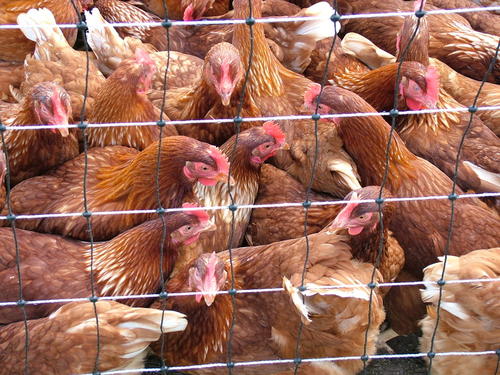Tracking Dangerous Viruses
International Meeting on Marek’s Disease and Avian Herpesviruses held at Freie Universität
Jun 29, 2012
Even one sick animal can cause a disaster. Despite high standards of hygiene, modern large-scale farming operations are particularly vulnerable for animal diseases.
Image Credit: sioda / www.morguefile.com
A modern chicken coop is like the operating room at a major medical center. Visitors wishing to enter the coop itself must first pass through an area meant to keep out germs, and coveralls and shoe covers are required. As many as 40,000 animals are raised at major facilities and shipped off after five weeks – when they weigh enough to be slaughtered.
When entering the coop, the visitor’s breath catches for a moment in his or her throat: 32 degrees Celsius and 50 percent humidity is the perfect climate for the young animals – but also for fungi, bacteria, and viruses. One sloppily cleaned delivery van or truck, one forgotten vaccination, one improperly disinfected cage – even one sick bird can spark a catastrophe.
“Today’s large-scale farming operations are susceptible to epizootic diseases; while high hygiene standards generally prevent the outbreak of disease, they also mean that only the most adaptable germs survive inside the coop – and those are the ones that can become resistant to commonly used antibiotics and vaccines,” says Professor Benedikt Kaufer of the Institute of Virology at Freie Universität. “Researchers have hardly developed new medications before they have to start looking for alternatives since the pathogens mutate and become resistant at some point.”
Kaufer and his Institute colleague Professor Klaus Osterrieder organized the ninth International Meeting on Marek’s Disease and Avian Herpesviruses, which was held in Berlin. A group of 120 virologists, veterinarians and veterinary researchers, pharmaceuticals researchers and developers, specialists in veterinary epidemiology, and biologists from all over the world met to discuss the results of their research, consult on new strategies in the fight against epizootic diseases, and network with each other.
The centerpiece of the meeting was gallid herpesvirus 2, also known as Marek’s disease virus (MDV), which causes the disease of the same name in chickens. The virus is spread in dander from the birds’ feather follicles. When a healthy chicken inhales infected particles, the virus first settles in the lungs before later attacking the spleen, kidneys and, finally, the nerves. The animals suffer symptoms of paralysis, and tumors regularly form in their innards.
“Once one bird suffers an outbreak of the disease, it spreads extremely fast. That’s why all chicks hatched in Germany are vaccinated,” Osterrieder says. In Germany alone, all laying hens must be vaccinated annually. In many parts of the world, birds raised for meat receive the same treatment. Even with these precautions, there were 29 outbreaks in Poland in 2011, and the disease could reemerge in Germany at any time. “By now, we are on the third generation of vaccines – it’s entirely possible that there will soon be variants of the virus that no longer respond even to the vaccines available today,” continues Osterrieder.
With that in mind, researchers all over the world are studying how herpesviruses behave. What happens when a cell is infected? What changes does the cell undergo? How does the immune system respond, and how does the infection progress? “Only if we fully understand the course of the disease will we be able to look for specific points of attack we can use to stop the virus,” Kaufer says.
The fact that the researchers in Berlin are working so hard on the animal disease could also pay off in terms of human medicine at some point. In human patients, as in animals, some tumor diseases are caused by viruses. The best-known examples are several strains of human papillomavirus (HPV), which can cause cervical cancer.
Many groups of researchers are currently using mice to study viruses that could be dangerous to humans. But the results of these studies, Kaufer says, are not immediately applicable to humans. Avian herpesviruses offer a special opportunity. “In them, we have a natural virus-host model. Our hope is that in some cases, findings from our research will also be applicable to human medicine.”
Further Information
- Prof. Dr. Benedikt Kaufer, Freie Universität Berlin, Department of Veterinary Medicine, Institute of Virology, Tel.: +49 (0)30 / 2093 6408, Email: b.kaufer@fu-berlin.de
- Prof. Dr. Klaus Osterrieder, Freie Universität Berlin, Department of Veterinary Medicine, Institute of Virology, Tel.: +49 (0)30 / 2093 6564, Email: no.34@fu-berlin.de

